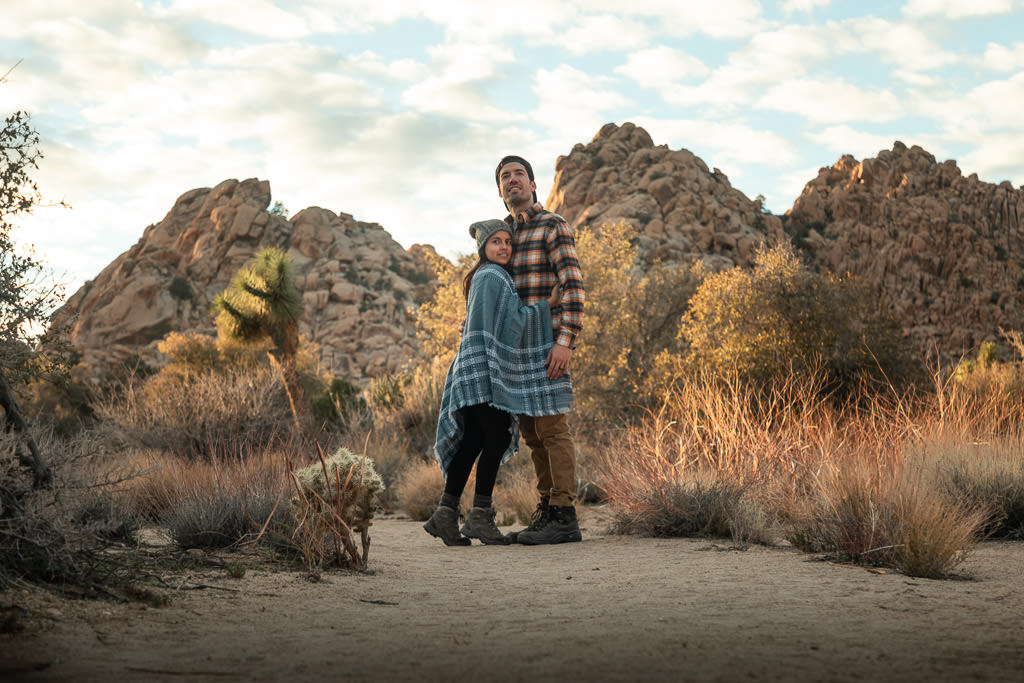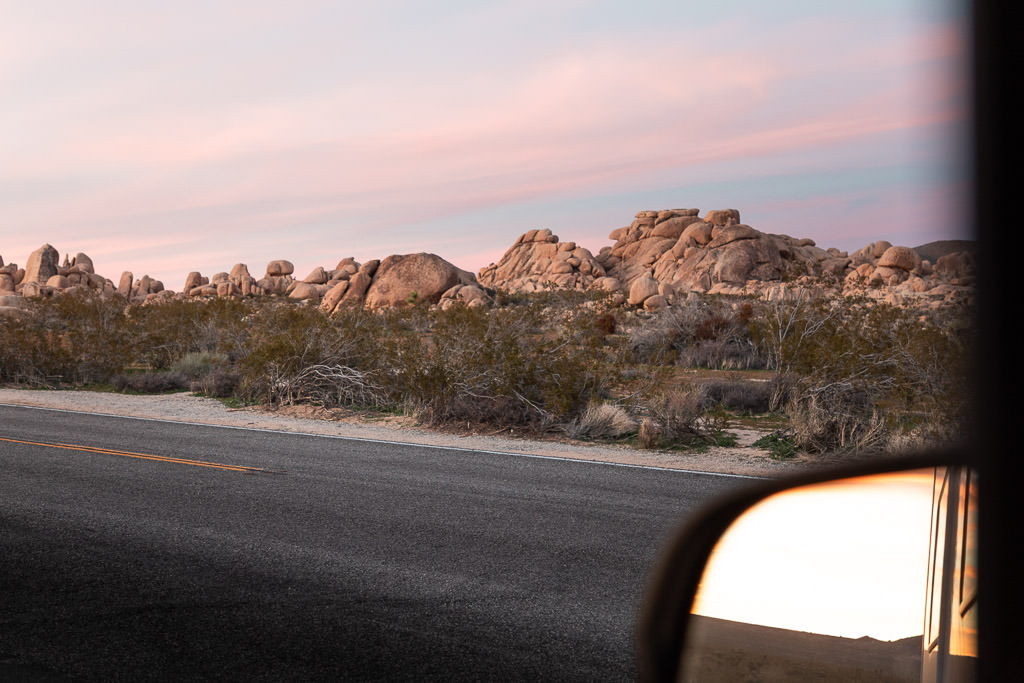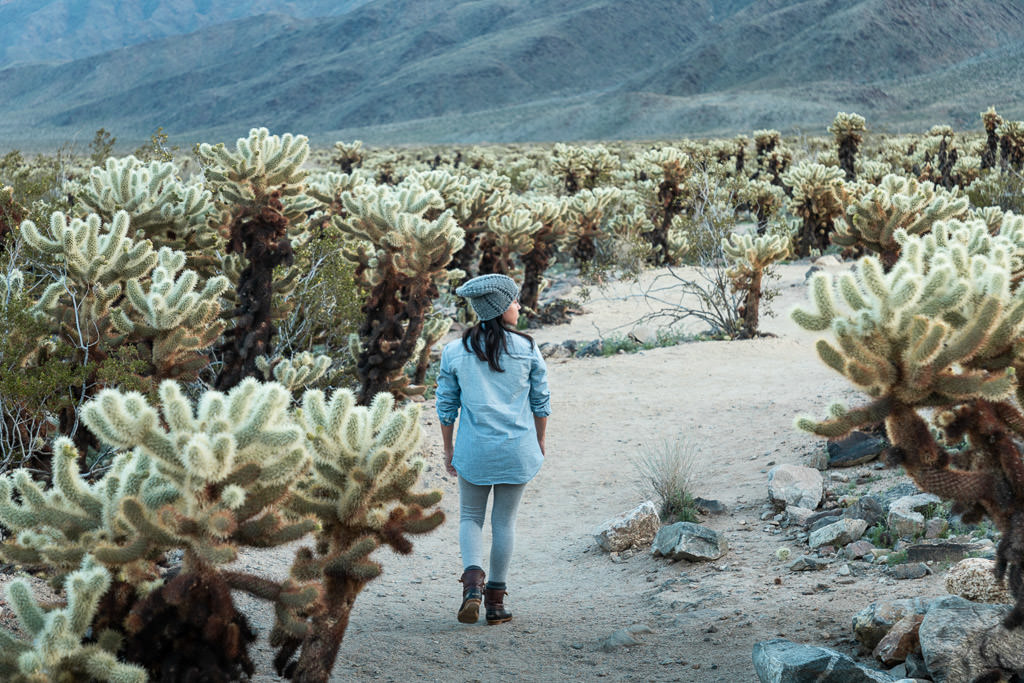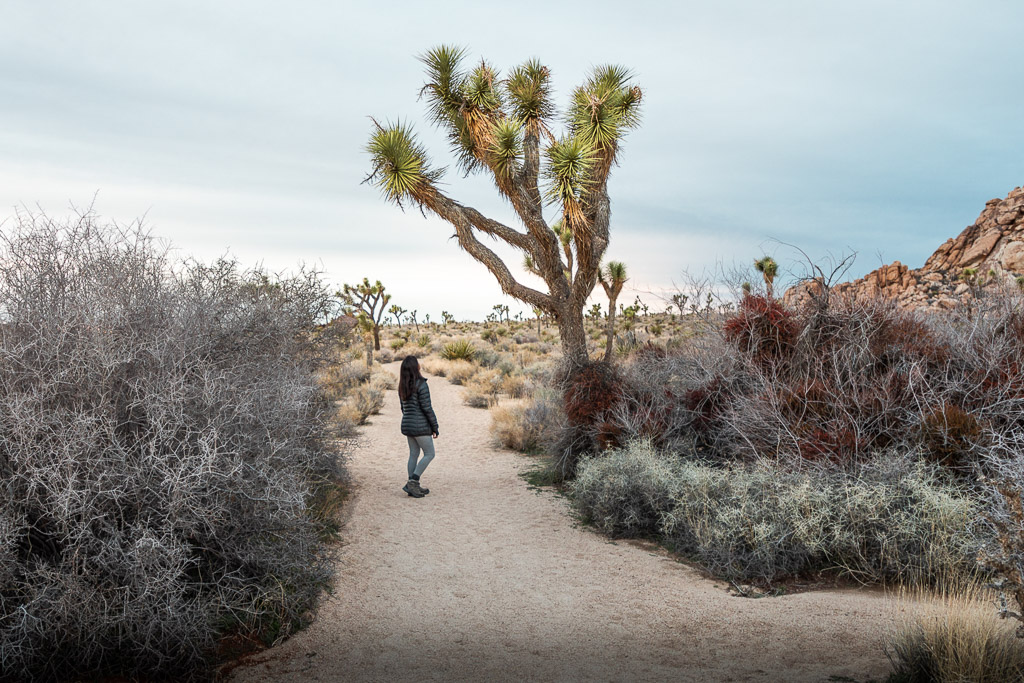
RVer Guide to Joshua Tree National Park
Joshua Tree National Park, home to incredible Dr. Seuss-looking Joshua Trees, is an iconic national park located just under 50 miles from Palm Springs, in southern California.
A Little Background
Within Joshua Tree, you'll be treated to two landscapes as two deserts meet up with one another. There's abundant wildlife, but the desert vegetation is the star here.
Entering the park from the South, like we did, the first thing you may notice is a total absence of Joshua Trees! This eastern portion of Joshua Tree is part of the Colorado Desert.
The Colorado Desert, which is also part of the Sonoran Desert, is at a lower elevation and hotter. This environment isn't suited for Joshua Trees. Instead, the star here is the Cholla Cactus, sometimes referred to as the "jumping cactus."
As you drive through the park you'll climb in elevation, move westward, and cross into a part of the Mojave Desert. Its higher elevation and cooler temperatures are very attractive to the Joshua Tree, and it is here that you'll find them at every turn.
The desert is a magical place with stunning sunsets, enchanting landscapes, and abundant life seemingly defying the odds to call this landscape home. At Joshua Tree you'll be able to wind down the road through the serene, wild Colorado Desert. You'll also be able to explore the other-worldly Mojave, a landscape so fantastical it's as if Dr. Seuss had been asked to design the set for the Flintstone's and the set was left for you to explore in the middle of the desert.
Read on for when to visit, where to camp in your RV, and what to do.
When to Visit
Off-season vs. Busy Season
It should come as no surprise that Joshua Tree's least popular months are the summer months. Due to the heat, the offseason runs from June to September.
Joshua Tree's busy season is October through May, with mid-February to mid-May being the busiest.
Visiting during the off-season will help you avoid crowds. But, keep in mind, you might need extra time to explore the park in the off-season. Visiting during the summer means you'll be safest limiting your activity to the early morning and late in the day. Campgrounds have no hookups, so you'll also want to keep that in mind if you RV with pets.
Our Experience Visiting in January
Visiting from October to January could help you strike a balance between the off-season and the busiest part of the season. We visited the park in January. While we weren't the only visitors, we were able to enjoy some moments alone at a few key sights.
It was a little colder and a little windier than what we like, but it was worth it to be able to enjoy the silence and serenity of the desert. We also didn't need to plan on limiting the bulk of our exploration to the early morning or late afternoon.

Where to Stay
In the Park
At Joshua Tree, you'll find eight campgrounds you can stay in, but not all are RV-friendly. Another thing to note is that campgrounds fill up very quickly on weekends during the busy season. From February to May, campsites are often completely booked on both weekends and weekdays.
All campgrounds are first-come, first-served during the off-season. During busy season, only some are first-come, first served and the rest require reservations. None of the campgrounds offer RV hook-ups of any kind. There are also no showers. Most of the campgrounds don't offer potable water, so you should arrive with a full fresh tank.
Campgrounds Needing a Reservation
Black Rock Campground is not as centrally located as other campgrounds at Joshua Tree, but it is big-rig friendly and only five miles away from shopping and supplies. Sites 7, 9, 13, 15, 17, and 20 can accommodate RVs up to 40 feet in length. RVs up to 42 feet long will fit in sites 38, 41, 43, and 45-48.
Cottonwood Campground is the other outlier campground. This campground is located in the southern portion of the park and has 62 sites. Most sites fit a combined RV length of 35 feet. Twenty-seven of the sites will accommodate RVs longer than 35 feet.
Black Rock and Cottonwood campgrounds are the only two campgrounds with potable water for RVs and RV dump stations.
Indian Cove Campground is located to the north of the Wonderland of Rocks, in a more secluded area of the park. It has a few sites that fit RVs with a max length of 35 feet: 1, 3, 7, 21-22, 49, 52, and 88.
Jumbo Rocks Campground is the last of the campgrounds that require reservations during busy season. The sites that fit 35-ft RVs are: 1, 2, 42-44, 71, 77, 78, 82-94, 123, and 125. This is one of the most popular campgrounds as it's nestled among some of Joshua Tree's famous rock formations and is close to Skull Rock.

First-Come, First-Served Campgrounds
Belle Campground is located in the center of the park and most easily accessed through the North Entrance Station. Sites 2-4, 6-8, and 14-18 can accommodate a max length of 35 feet. If you are towing, this is a combined max length of 35 feet including the tow vehicle.
Hidden Valley Campground is located further west in the park, and most easily accessed from the West Entrance Station. Max RV length here is just 25 feet. However, these sites are small and if you're in a motorized RV, you'll find these sites are best suited for campervans like the Travato.
White Tank Campground, which is centrally located like the campground above, has 15 campsites. Though a combined RV length of 25 feet is permitted, this campground is best suited for tents. So as an RVer, a campervan like the Travato or a towable like the Minnie Drop would make the most sense here.
Ryan Campground also permits RVs and towables, but as an RVer you'd also find this particular campground is best suited to tent camping and possibly small towables.
Camping Outside Joshua Tree
We chose to boondock, or dry camp, just outside the southern entrance to Joshua Tree National Park. The dispersed camping available here is managed by the Bureau of Land Management. The camping here is free, but there are no services of any kind, including trash service. Be prepared to pack your trash out and come with a full fresh tank. Also, keep in mind campfires require a permit. The boondocking spots are between I-10 and the southern entrance of the park, roughly along Edison Powerline Road.
If you're looking for full hook-ups and more services than the National Park offers, there are private campground options both north and south of the park. For full-hookups, the Palm Springs KOA to the south of the park is a great option. Twentynine Palms RV Resort is a full hook-up campground option to the north of the park.
What to Do
Driving Tour
If you're short on time, note that it's quite possible to drive the park in one day. If you only have enough time to drive through, you could stop at the Cholla Cactus Garden and at Skull Rock. You'll likely want to have more time at Joshua Tree, but this would give you one stop in the Mojave Desert and one stop in the Colorado Desert.
Cholla Garden
Drive out to the Cholla Cactus Garden, planning to arrive in the later afternoon just before sunset. Here you'll be able to (carefully) stroll along paths winding you through dozens of cholla cacti. Be sure to read the warning signs and avoid brushing up against any cacti. The Cholla Cactus is also known as the "jumping cactus" due to how easily it attaches itself to you.
If you arrive before sunset (when it's not too cloudy), you'll catch this area during "Golden Hour". This is a great time to capture photos of the Cholla Cactus Garden. Even if you're not there for the pictures, you'll be treated to a beautiful walk with the cacti seemingly glowing in the sun.

Ryan Hike
If you love lookouts and vistas that place you high above, you may want to plan on hiking up Ryan Mountain. This four-mile out and back hike takes you to one of the highest points in the park. You'll have beautiful vistas of the Wonderland of Rocks, the Pinto Basin, and Pleasant Valley.
Boy Scout Trail
Looking to feel lost in nature? Try hiking all or some of the Boy Scout Trail. The Boy Scout Trail is an eight-mile hike that takes you through the Wonderland of Rocks. If you're prepared with food and water (and it's not too hot) you can hike the full eight miles. If you're used to shorter hikes, try hiking just part of the trail and turning back early.
We loved the Boy Scout Trail because you really feel as if you're going deep into nature at this park. Hiking while surrounded by Joshua Trees and rock formations was special for us. Although we loved our drive through the park, we were happy to get the chance to return for this hike in order to feel like we were able to really "get into" all of what we were seeing at a distance from the car.
Please remember eight miles in the desert is strenuous. Do not attempt to hike long distances in the desert in the heat or without adequate water, food supply, and sun protection.

Additional Tips
- Be sure to bring plenty of food and water. There aren't lodges or restaurants at Joshua Tree National Park.
- Pack sun protection and layers as well, since the temperatures can change quickly in the desert.
- There is not much in the way of shade at Joshua Tree, so it's best to plan visits for the morning and late afternoons.
- Cell reception is largely non-existent in the park. Be sure to bring a map or grab one at one of the Visitor's Centers.
Comments
Comments on this post are moderated, so they will not appear instantly. All relevant questions and helpful notes are welcome! If you have a service inquiry or question related to your RV, please reach out to the customer care team directly using the phone numbers or contact form on this page .